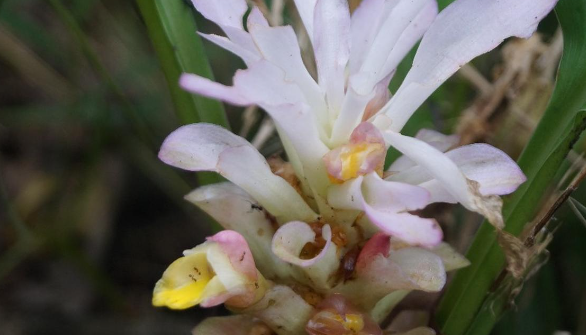New Turmeric Cousin Discovered in Nagaland’s Ungma Village
During a field trip to Nagaland, researchers found a new species of plant closely related to turmeric. This new species, named Curcuma ungmensis, was discovered near the village of Ungma and has now been published in the scientific journal Phytotaxa.
Taxonomy and Family
Curcuma ungmensis belongs to the Curcuma genus, which is part of the ginger family, known scientifically as Zingiberaceae. This family includes about 200 species in India, such as the well-known turmeric (Curcuma longa) and black turmeric (Curcuma caesia). Plants in this genus are mainly found in South and Southeast Asia.
How was the New Species Identified?
Researchers carefully studied all known species of Curcuma in the region. When they couldn’t find any matches in the Checklist of Flora of Nagaland published by the Botanical Survey of India, they concluded that they had discovered a completely new species.
Botanical Characteristics
Curcuma ungmensis is a rhizomatous herb, meaning it grows from underground stems, or rhizomes. The plant reaches a height of 65-90 cm and has distinctive yellow flowers that bloom between August and October during the rainy season. The rhizomes grow deep in the soil, helping the plant anchor itself firmly.
Potential Uses
While researchers are still learning about Curcuma ungmensis, they believe it could become a popular ornamental plant because of its striking yellow flowers. The plant could be used in gardens or as ground cover, and its vibrant flowers may also be ideal for making decorative flower arrangements.
Curcuma ungmensis is only known to grow near the village of Ungma, making it vulnerable to threats from human activities, such as road development and construction. To protect this unique plant, researchers recommend taking steps to conserve its habitat.
About Curcuma ungmensis
- Curcuma ungmensis is a plant from the ginger family, Zingiberaceae.
- It grows in Southeast Asia, mainly in Myanmar and Thailand.
- The plant thrives in warm, tropical climates.
- It has bright yellow flowers and large green leaves.
- People in the region use its roots in traditional medicine, especially to reduce inflammation.
Month: Current Affairs - September, 2024
Category: Agriculture Current Affairs


